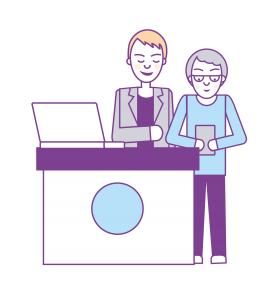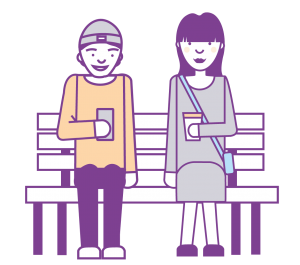For whom is accessibility important?

More than one million Finns need more accessible services
Good accessibility is particularly important for people who face challenges in using digital services or devices. It has been estimated that there are more than one million people in Finland who may find it difficult to use digital services, especially if no attention has been paid to the accessibility of services.
For example, the following things are not always sufficiently taken into account when designing and implementing websites and mobile applications:
- visual disabilities and impaired vision
- impaired hearing and deafness
- physical and motor kill constraints such as cerebral palsy, muscle weakness, tremors or paralysis
- intellectual and developmental disabilities
- reading and learning difficulties
- concentration difficulties
- mental health problems
- memory problems
- other cognitive problems
- poor proficiency in Finnish
- unaccustomed to the use of digital services
- temporary challenges such as noisy surroundings, bright sunlight, stress or a hand in a cast
Challenges experienced in the use of digital service can be caused by many factors. For example, a blind person who uses a screen reader to access digital services often encounters problems due to poor technical implementation: for example, navigation cannot be accessed on the keyboard or the screen reader does not read the content in the correct order.
Immigrants or people with intellectual disabilities may find it impossible to understand difficult terms and complex sentence structures.
A person with a hearing impairment needs subtitles for videos with audio content.
A person with poor vision will need such things as good contrast and good content scalability.
Accessibility depends on the person and the situation
Accessibility is not fully realised by following one set of guidelines, but what is accessible always depends on the user and the situation.
The basic idea of accessibility is that digital services are designed so well that they take into account the different situations and challenges faced by different users so that as many people as possible can use the services as effectively as possible 
Accessibility benefits all people
Accessibility is essential for some people, but it benefits everyone. For example, video subtitles also benefit people with normal hearing who for some reason cannot listen to a video’s audio content.
Accessibility is customer-oriented design that takes different situations and needs into account as well as possible. Investing in accessibility is worthwhile: It increases equality in a digitising society and makes it possible for more people to act independently.
Examples of different users
On our user stories web page (in Finnish or Swedish) we have illustrative stories and examples of different people as users of digital services. Our website also contains examples of accessibility work by different organisations (in Finnish or Swedish).
In addition, information on different users and the assisting technologies they need is available in Finnish, for example on the accessibility website maintained by the Finnish Association on Intellectual and Developmental Disabilities (in Finnish). Similar information and videos in English can be found on the accessibility pages of the international World Wide Web’s Web Accessibility Initiative website.
